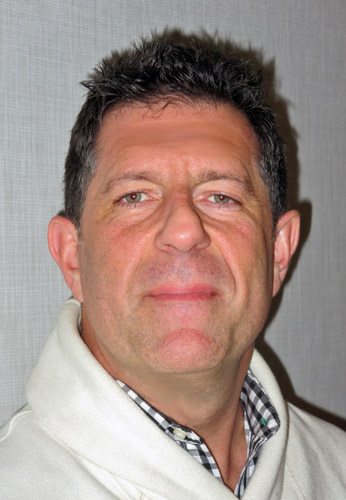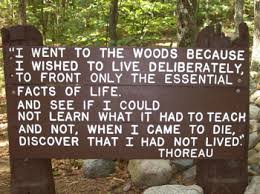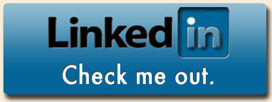View this e-mail in your browser.
 |
February 2015
Volume 34 Number 2 |
|
|
| IWOC: The Premier Resource for Professional Writers
|
|  | LinkedIn |
 |
Facebook |
|
 |
Twitter |
|
| |
EDITOR'S INTRODUCTION
In the January issue of Stet, I introduced the e-newsletter format, and I also said that I aimed to have a monthly theme. Naturally, all articles in a given issue won't fit the theme, and I may have to stretch a bit to get 12 different themes, but maybe you can help me out with suggestions. Last month's theme was Learn Something New. This month I'm going with Mind the Store, i.e., get organized so you can work faster and smarter. Find a source of inspiration that will motivate you to seek new clients. Then try new ways to do that. There's something about all this in this issue. And speaking of inspiration, here is your February monthly quote:
"Inspiration is a guest that does not willingly visit the lazy."
— Pyotr Tchaikovsky
If you want to get clients to come to you — who wouldn't? — check out the second installment of wnat, and what not, to include in your LinkedIn profile to make that happen. Also, if you've already gotten a job through LinkedIn, send me an e-mail and tell me about it. 
— The Editor |
FEBRUARY MEETING PREVIEW
THE LIFE OF A FREELANCE WRITER: 10 TIPS TO WORK SMARTER
 Only 24 hours in a day? Sometimes when freelancers’ enterprises are really humming, they long for at least another six hours. But putting that pipe dream aside, at the next IWOC meeting on February 10, IWOC members Laurel Johnson and Betsy Storm will take on the challenging — and enlightening — topic of time management specifically for freelance writers. Only 24 hours in a day? Sometimes when freelancers’ enterprises are really humming, they long for at least another six hours. But putting that pipe dream aside, at the next IWOC meeting on February 10, IWOC members Laurel Johnson and Betsy Storm will take on the challenging — and enlightening — topic of time management specifically for freelance writers.
Whether you consider yourself an “old schooler” or an app-happy scribe, saving time and working smarter (resulting in a greater number of billable hours) boils down to one objective: making and maintaining good habits.
Our presentation is a guided tour of time-saving expertise — from the most effective techniques for time tracking, project management, quashing time wasters, keeping up with your incoming work flow, developing do-able work plans, setting priorities, a wrap-up of billing and other relevant software, and yes — even more! (Whew…)
We’ll finish up it up with a list of resources for your further exploration. Please join us. We’ll ensure your time is well spent.
Presenters
Laurel Johnson
After directing creative teams for ad agencies such as Frankel and Leo Direct, as well as managing her freelance business, Laurel Johnson can assure you that being your own boss is far tougher. For the past 10 years, she has worked independently to create successful marketing campaigns for museums, hospitals, professional associations and more — all while providing ongoing caregiving for elderly relatives. She is adept at sorting though what really needs to be done — and clearing out what doesn’t.
Betsy Storm
Betsy Storm is the principal of Top Drawer Communications, a Chicago enterprise that helps organizations, businesses and individuals communicate with a variety of audiences to enhance their images, reputations and visibility. Previously, Betsy spent 20-plus years as a communications professional for a range of organizations, including Northwestern Memorial Hospital. During her more than 20 years as a freelancer, Betsy has raised two children, participated in three presidential campaigns, and happily invested her time as “Nanny” to her two young grandsons. Time management skills have saved her sanity.
Don’t miss this opportunity to shape up your new year by getting some nifty tips on how to save more time. So come to the Independent Writers of Chicago meeting on Tuesday, February 10, at the Gratz Center, just off Michigan Avenue, between Chestnut and Delaware. Ask at the reception desk for the room location; they sometimes move us. We meet at 5:00 for snacks and networking; the program runs from 6:00 till 7:15.
Stick around for lots more conversation and a buy-your-own dinner at a nearby restaurant. Park at 900 Michigan (Bloomingdale’s, enter from Walton or Rush) after 5:00 and have your ticket validated (only six bucks!) at the Gratz Center reception desk or arrange a steeply discounted advance
parking permit through Spot Hero. Several buses also run on Michigan Avenue. 
— Diana Schneidman
|
|
JANUARY MEETING RECAP
CONTRACT AND COPYRIGHT ISSUES FOR AUTHORS, WRITERS, AND OTHER CREATIVE PROFESSIONALS
 David Adler began his presentation with an overview of his career. He indicated that he feels very fortunate that he loves what he does. He said, however, that he did not always love those for whom he worked, so he started own firm. Because he is an intellectual property lawyer, most of his clients are entrepreneurs in the creative arts. Adler also loves the fact that technology has transformed the way business gets done. In addition to his lawyerly activities, he created an “introduction to e-business” class that he teaches at Columbia College.
David Adler began his presentation with an overview of his career. He indicated that he feels very fortunate that he loves what he does. He said, however, that he did not always love those for whom he worked, so he started own firm. Because he is an intellectual property lawyer, most of his clients are entrepreneurs in the creative arts. Adler also loves the fact that technology has transformed the way business gets done. In addition to his lawyerly activities, he created an “introduction to e-business” class that he teaches at Columbia College.
Due to his concentration on the business of intellectual property law, Adler has probably seen all of the legal issues that we may have encountered, and he suggested he could help us deal with them. For this meeting, he decided to focus on two of the bigger issues: contracts and copyrights.
Copyrights are granted by the Constitution, rather than by common law. Copyright protects creative expression but not ideas — no one owns ideas — only one’s creative expression is protected. With that, there is a “fixation” requirement. In order to be copyrighted and legally defensible, the creative expression (book, article, song, photograph, etc.) must be fixed in a tangible media (pen to paper, typed out, photographed) and perceivable by someone else.
There was a change to copyright law in 1976. A copyright now attaches at the moment of fixation, so once you write it, type it, record it, photograph it, there is nothing you need to do to protect it. That is, you no longer need to write the work and mail it to yourself if it was created after 1978. The 1976 amendment to the copyright law went into effect in 1978. In his presentation, Adler focused on post-1976 because, hey — its 2015!
He noted that most items on the Internet are protected or protectable so, he begged us to realize that almost everything one finds on the Internet is copyrighted. However, there are exceptions: works that are in the public domain are exempted. Why? Either the copyright has expired or it is a government document. (Anything written by the government qualifies as a government document). Also, most of the social media platforms like Facebook, Twitter, and Instagram have terms-of-use clauses that state that if you use their system, others can use your content.
Adler also mentioned that the copyright notice — the symbol (©) — is no longer required since the 1978 amendment, but it is still a good practice for you to use it. The copyright notice is a form of branding, and it shows that you are claiming ownership of your work.
There are some things that are not protectable by copyright. Titles (of books/TV shows/songs, etc.) are not nor are names or facts.
Copyright protection lasts a fairly long time. If the work was published before 1978, the copyright lasts for 95 years. If published after 1978, the protection lasts the author’s life plus 70 years. If it is a joint work, 70 years after the last author dies. If it is a work made for hire, the copyright lasts between 95 and 120 years, depending on the date the work was published.
So, if you write it, and it is protected by the new amendment, why do you need to register a work for copyright? Well, if someone infringes on your copyright, you’ll need a record for enforcement purposes (it is cheap: about $25.00 - $35.00). If you do not register your work, you may be liable for costs and attorney fees if you take someone to court. Also, you’ll need the registration to collect statutory damages from the infringer.
Adler’s information on copyright was so interesting that we almost did not get to contracts, but we did get some information. A contract is a legally enforceable promise. Adler advised us that oral contracts are ambiguous and not worth the paper they are written on — that’s a joke — but they can be enforceable at times. Some contracts can even be formed via e-mail but not things like wills or trusts. Check with a lawyer to be sure the e-contract you’re entering will be binding. Ink signatures are not required for contracts transmitted via e-mail because e-signatures are binding. However, most people still prefer ink signatures on contracts.
To contact David Adler, click on the link at the beginning of this article or call (toll free) 886-734-2568. 
— Cynthia Tomusiak

| |
|
President's Column
LEGEND OF THE SAMURAI WRITER

A few weeks ago NPR was on my radio while I was in the car running errands, and I was shocked to hear words I never hear in public. It happened during an interview of two women who write young-adult fiction. “Why do you write in this genre?” the host asked. One woman made an unremarkable comment, and then she said: It’s a good business model because girls read in packs, and one enthusiastic girl will draw in her friends and increase your sales. There it was, “writing” and “business model” and “sales” all together and coming out of radios all over the country where any passing child could hear this. It shocked me because it shattered the writer stereotype that holds that we are devoted to art and great issues and do not cloud our souls with mortal concerns — such as eating.
Of course the stereotype is wrong as most are. This is why I like our name because, as one IWOC member said to me, it connotes skilled professional people who are due respect. Compare that to the common label “freelance.” The word’s history is rooted in the terminology for medieval mercenary soldiers: “free lances”. Feudal Japan had its ronin, lordless samurai who became mercenaries, and the shadowy ninja. But those guys have their own movies, lots of movies. Will Akira Kurosawa ever make a film about ninja writers who slip sharp pens from their sleeves and hurl a cluster of pointed bon mots? Wait, Kurosawa’s dead. Maybe Eastwood has some time now that the sniper movie is out. Alas, the only people who pay attention to the common label for us are those who want to take the first syllable and make it the terms of payment.
And there it is: the writer’s lament. The world doesn’t value us. Rates are low. On some days that theme occupies a significant portion of the e-mail lists I belong to. In some parts of the writing marketplace, it is partly true. In other parts, it is not. We know from our own survey that pay rates have generally not changed much in a few years. That’s not optimum given inflation’s continuing creep, but it’s not awful. What we sometimes don’t do is seek out enough counterbalance for ourselves, our own samurai movies.
Where are you finding inspiration? Part of mine comes from "Shark Tank". If you haven’t heard of it, it’s an ABC show that features entrepreneurs seeking investments from a panel of self-made multi-millionaire business people. It is not the ego-jousting among the millionaire sharks that is inspiring — even if it is entertaining — but the attitudes of the people involved. The entrepreneurs who gain funding have good ideas, but more than that they’re focused, positive, and persistent. Nothing will stop them. Perhaps that positive attitude (it used to be called can-do) is the reason why "Shark Tank" has grown in popularity while traditional economic opportunities have shrunk for a significant share of the population.
We need not be complete Pollyannas to counterbalance the Cassandra tendencies of people with endless laments, but we do need sources of inspiration, such as the honesty of the YA author who spoke about writers making a living. If you have not found your own source of renewal, do yourself a favor and find one, or a few. And when you need a big morale boost, when you cannot express anger to a client who sees only the “free” part of “freelance,” click over to YouTube and watch legendary science fiction writer Harlan Ellison’s rant about writers being expected to work for free. Watch it twice. Just make sure there aren’t any impressionable children within earshot.
— David Steinkraus
DID YOU KNOW?
ROAD TRIP! VISIT A SPOT WITH LITERARY CONNECTIONS
Wanna take a road trip? Check out these small town literary locations.

Walden Pond, Concord, Massachusetts: Henry David Thoreau spent time writing here in a little one-room cabin that he purchased for $28. Sadly, the original is no longer, but a replica stands about a half mile from the original site. You can swim, canoe, hike, or simply contemplate nature just as Thoreau did.
Jackson’s Island, Missouri: Mark Twain set the Adventures of Huckleberry Finn in the fictional town of St. Petersburg, which was modeled after real-life Hannibal. In the novel, Huck and Jim hide out on Jackson’s Island while they wait to escape to freedom. Today you can jump on a boat and explore the tiny, three-and-a-half mile island, which is little changed since Twain’s time.
Coalwood, West Virginia: Made famous by Homer Hickam Jr.’s novel Rocket Boys, Coalwood is the real-life town where the author grew up building rockets. For years, this picturesque town hosted the October Sky Festival (based on the 1999 movie). Now the fest takes place in nearby Beckley.
New Bern, North Carolina: Author Nicholas Sparks lived many years in this town and his most famous tear-jerker, The Notebook, is set here. Fans can check out several notable locations from the book, including the Alfred Cunningham Bridge, Harvey Mansion, and the Centenary Methodist Church.
Jonesboro, Georgia: Margaret Mitchell used this town, where her grandparents lived, as the inspiration for Gone with the Wind. Tara is fictional, but visitors can step back in time at Stately Oaks Plantation, which dates back to 1839. Fans can also take a GWTW historic bus tour, visit the Road to Tara Museum, which houses artifacts from the book and film, and stop by Margaret Mitchell Memorial Park.

— Katherine Mikkelson
LOOKING FOR CLIENTS?
MORE TIPS ON BRINGING YOUR LINKEDIN PROFILE UP TO SNUFF
|

In the January Stet, we gave you some tips from experts about what to include in your LinkedIn profile to attract the attention of potential hirers. Here are some more:
It might be tempting to just dump your resume into the profile, and call it a day. But don’t. Your resume and your profile are not interchangeable. LinkedIn has its own Resume Builder, but that will simply turn your existing profile into a resume format, so don’t do that either. What you want is a LinkedIn profile that will take advantage of the way potential clients search on the site. They are looking for someone to fill a particular role, but you don’t know what it is. So, on your LinkedIn profile, you’ll probably want to include all previous jobs that are relevant to your skills and interests. (Typically, you send resumes to potential clients with whom you’ve already had contact, so you know what’s wanted. Therefore, on the resume, you can – and probably should – omit jobs that are unrelated to the services they need.)
Now that we’ve got that cleared up, let’s talk about how tell possible clients that they should hire you in preference to other professionals they find on the site. That should be your goal, not just spitting out what you’ve done. You have to sell yourself, but, although this may seem counterintuitive, keep your focus narrow, e.g., tout yourself as a cracker-jack writer of fund-raising copy for small to midsize children’s charities. (Because thousands of hirers troll this site, you have a better chance of getting hits than you may think, and if you do, your experience is right on the money.)
I’m exhausted just writing this, but experts say the bigger your LinkedIn network, the better chance you have of scoring a job. According to these experts, 170 connections will result in more than 22,000 second-degree connections and over two million third-degree connections. Sheesh! No wonder people I've never heard of keep asking me to join their networks.
Of course, you want to sound with-it in your profile, but you’ll want to avoid the verbiage below. LinkedIn says they’re the most over-used buzz words and phrases in people's profiles. Using them makes you, ho-hum, just another unimaginative member of the crowd.
1. creative
2. effective
3. organizational
4. extensive experience
5. track record
6. motivated
7. innovative
8. problem solving
9. communication skills
10. dynamic
I hope this creative problem-solving article has been effective. Backed by my extensive experience and dynamic track record in organizational matters, I have tried to motivate you to use your communication skills when re-examining your profile. Why not go for something more innovative? 
— Joen Kinnan
|
| |
| |
| |
Copyright © 2015 Independent Writers of Chicago. All rights reserved.
To submit an article, suggest a topic, make a correction, or just comment, contact Joen Kinnan, the editor.
Stet, the IWOC newsletter, is a member benefit.
Unsubscribe |
|
|
| |
|




 David Adler began his presentation with an overview of his career. He indicated that he feels very fortunate that he loves what he does. He said, however, that he did not always love those for whom he worked, so he started own firm. Because he is an intellectual property lawyer, most of his clients are entrepreneurs in the creative arts. Adler also loves the fact that technology has transformed the way business gets done. In addition to his lawyerly activities, he created an “introduction to e-business” class that he teaches at Columbia College.
David Adler began his presentation with an overview of his career. He indicated that he feels very fortunate that he loves what he does. He said, however, that he did not always love those for whom he worked, so he started own firm. Because he is an intellectual property lawyer, most of his clients are entrepreneurs in the creative arts. Adler also loves the fact that technology has transformed the way business gets done. In addition to his lawyerly activities, he created an “introduction to e-business” class that he teaches at Columbia College.

